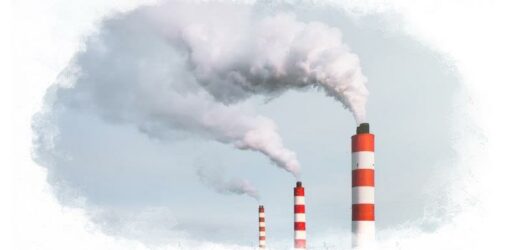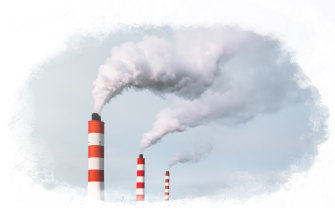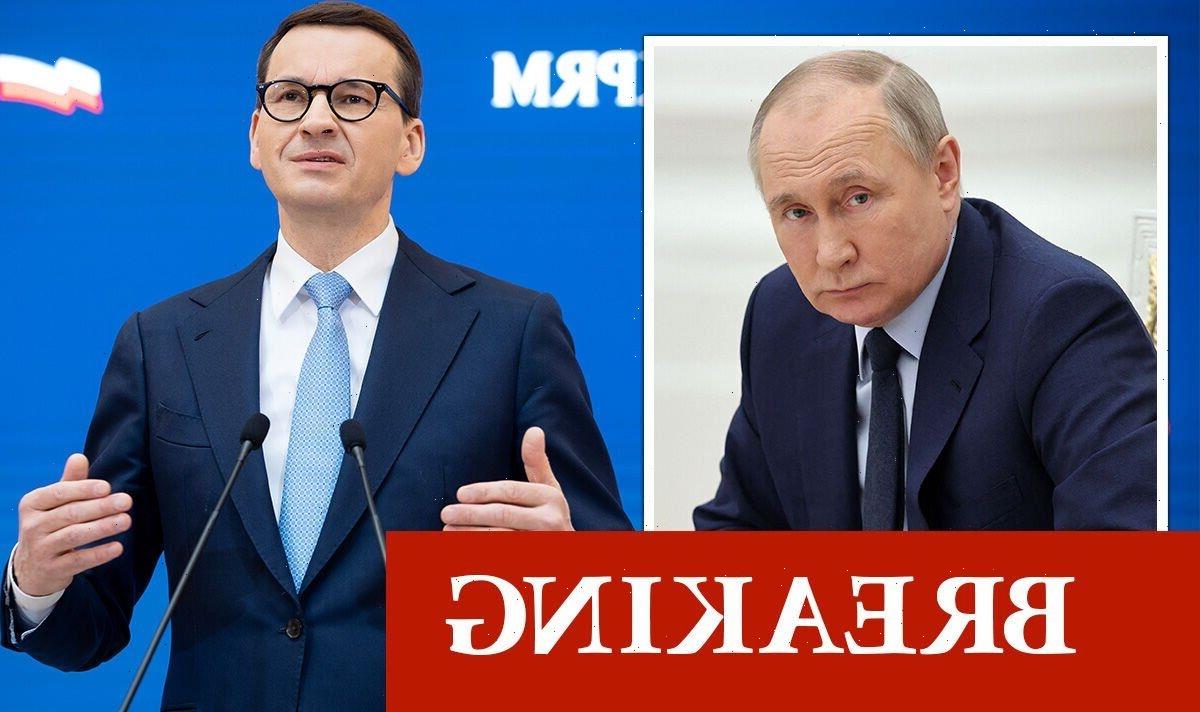How does the mechanism work? How is it different to the Coalition’s plan? And what does industry say?
A storm is brewing yet again over a Labor Party climate policy. It must be an election campaign. The Coalition is accusing the opposition of an economy-damaging carbon tax and Labor is fending off the claims with the promise of lower greenhouse gas emissions and more jobs.
If Labor forms government, it has committed to reduce Australia’s greenhouse emissions from 2005 levels by 43 per cent by 2030 – and to reach net zero by 2050. The Safeguard Mechanism is one way to help achieve this.
But it’s particularly controversial in the context of an election because it would force miners and manufacturers to invest in cleaner technology, and any climate policies that affect these industries have been the stuff of scare campaigns for the past decade.
So, how does Labor’s Safeguard Mechanism work? How is it different to the Coalition’s plan? What do the numbers show? And what does industry say?
Credit:
What’s Labor’s Safeguard Mechanism?
The mechanism sets pollution limits on Australia’s 215 biggest carbon polluters, which each create more than 100,000 tonnes of greenhouse gases a year, generating a total of 140 million tonnes of greenhouse gases. That’s 28 per cent of Australia’s emissions, which stand at 501.5 million tonnes a year.
The list of big polluters includes coal mines, coal plants, aluminium smelters, cement producers and so on. Labor would set pollution caps on these companies that tighten over time, which it says would give the companies time to adjust their operations and reduce their emissions in a manageable way. But Labor has not detailed what those caps would be.
The companies would have a range of options to cut their pollution including clean technology, emissions offsets or emissions capture. For example, an aluminium smelter could use technology to replace its gas-fired furnaces with renewable energy. A coal mine could capture the greenhouse emissions that are typically released into the atmosphere when a coal seam is tapped.
Or a company could offset its emission. This means it doesn’t reduce its pollution level but invests in projects that use natural processes such as tree planting to sequester carbon from the atmosphere into trees or the soil. Alternately, the safeguard mechanism could allow one company to offset its emissions by buying credits earned by other polluters who have cut emissions beyond their pollution limits and have extra to spare.
The Coalition actually established the Safeguard Mechanism in 2016 but didn’t apply pollution limits to force companies to reduce their emissions. In fact, emissions by these 215 companies have grown 7 per cent since the policy was created.
Is this Safety Mechanism a carbon tax?
Setting pollution limits on companies is not a tax. Polluters do not pay a fee if they exceed their limit. Instead, they are forced to buy offsets equivalent to the volume of carbon emissions that exceeded their cap.
Australian energy policy has been dominated by scare campaigns about the detrimental impact of taxing polluters based on their level of carbon emissions, despite most economists agreeing it is the most economically efficient way to reduce emissions.
This election campaign is no different. Prime Minister Scott Morrison says Labor is imposing a “sneaky carbon tax” on industry with the Safeguard Mechanism. “What Labor has is a tax, a sneaky carbon tax on traditional industries in this country and that’s not good for regional Australia,” Morrison said on April 27.
When asked how he could label Labor’s plan a carbon tax when it uses a mechanism created by the Coalition, Morrison said the difference was in “how the thresholds work”. “What Labor is doing is binding them on this and issuing penalties on those companies – so they couldn’t be more different,” he said.
Labor leader Anthony Albanese says, “there will be no carbon tax, ever” under a government he leads.
But forcing companies to buy offsets means they will pay a price for their carbon pollution, and the term “carbon price” has become synonymous with carbon tax scare campaigns over the past decade.
The climate plans from Labor and the Coalition have assumed it would cost no more than $24 a tonne by 2050 to buy one tonne of carbon offsets. However, it is not compulsory for any company to pay this price. They could avoid purchasing offsets by adopting cleaner technology.
The Coalition has also committed to reach net zero emissions by 2050, but it has a crucial difference to Labor’s plan. Its policy hinges on the assumption that companies will voluntarily reduce their emissions with uptake of cleaner technology, while Labor has imposed limits under its safeguard mechanism.
It remains unclear what the Coalition will do if new technologies are insufficient to deliver the anticipated emissions reduction.
What do the crunched numbers show?
The safeguard mechanism is not expected to be Labor’s biggest-ticket emissions reduction policy. It has also set an ambitious goal to spend $20 billion upgrading the electricity grid to cut coal power emissions and increase pollution-free renewable generation to 82 per cent of the grid by 2030.
But not emissions are all equal, and industrial emissions are harder to reduce than power generation.
Some sectors such as transport are expected to see dramatic pollution drop-offs as the relatively mature and, ultimately, cheaper technology of electric vehicles replaces internal combustion engines. Agriculture is hoping to offset emissions from methane burping cows and farm equipment with broadscale tree planting and soil carbon sequestration.
But, while there are already emerging clean-technology options for industrial processes in mining, smelting, cement manufacture, steel production and so on, the commercial uptake is not as certain.
Labor commissioned modelling from energy analyst Reputex that took the opposition’s policy parameters and made projections of the future scenarios. It modelled what would happen if the Safeguard Mechanism was tightened over time to force a 34 per cent cut of 48 million tonnes from the companies’ cumulative 140 million tonnes total emissions.
Reputex said companies would spend $1.68 billion in new technologies, upgrades and carbon offsets, while a future Labor government could be expected to allocate $3 billion from its $15 million National Reconstruction Fund for loans and underwriting these investments.
This industrial and carbon farming expansion was projected to generate 1600 new jobs.
What does industry say?
Labor has promised that no emissions-intensive, trade-exposed industry – including coal miners that export to the global market – would face pollution limits that put them at an economic disadvantage to the international competitors. It has also pledged there would be no net job losses.
The Clean Energy Regulator would be tasked with setting the pollution caps and how they would apply across all 215 safeguard mechanism companies. It is expected that companies with a cheaper pathway to swifter emissions reduction targets would cop tighter limits earlier than those where it is more expensive to reduce pollution.
In a major turnaround since the 2019 election, where it opposed Labor’s climate policy, the Business Council of Australia has backed the Safeguard Mechanism.
“The Safeguard Mechanism is already in place alongside a suite of other measures to reduce emissions, with careful consultation with industry we believe it is the right incentive to drive investment, deliver more jobs and meet our net-zero commitments,” the council said.
Australian Industry Group chief executive Innes Willox said of Labor’s policy in December that firm and predictable emissions reduction requirements “help underpin transformative industry investments”.
“Building on the existing Safeguard Mechanism is an obvious place for any government to start. While hardly the perfect climate policy tool, the safeguard is a familiar system established and refined by the current government over the past seven years. Industry has long expected that sooner or later baselines would ratchet down to drive abatement.”
The National Farmers Federation said in December that Labor’s plan for the Safeguard Mechanism was a “sensible lever and well targeted”.
International Monetary Fund Australia mission chief Harald Finger said in September, given Australia was not using a carbon price to drive down greenhouse gases, it should tighten the Safeguard Mechanism to drive down industrial emissions.
The Minerals Council of Australia has said it wants to consult with Labor over its plans.
The Carbon Market Institute’s Climate Policy Survey found last year that 79 per cent of businesses supported strengthening the Safeguard Mechanism.
If you'd like some expert background on an issue or a news event, drop us a line at [email protected] or [email protected]. Read more explainers here.
Most Viewed in Politics
Source: Read Full Article



